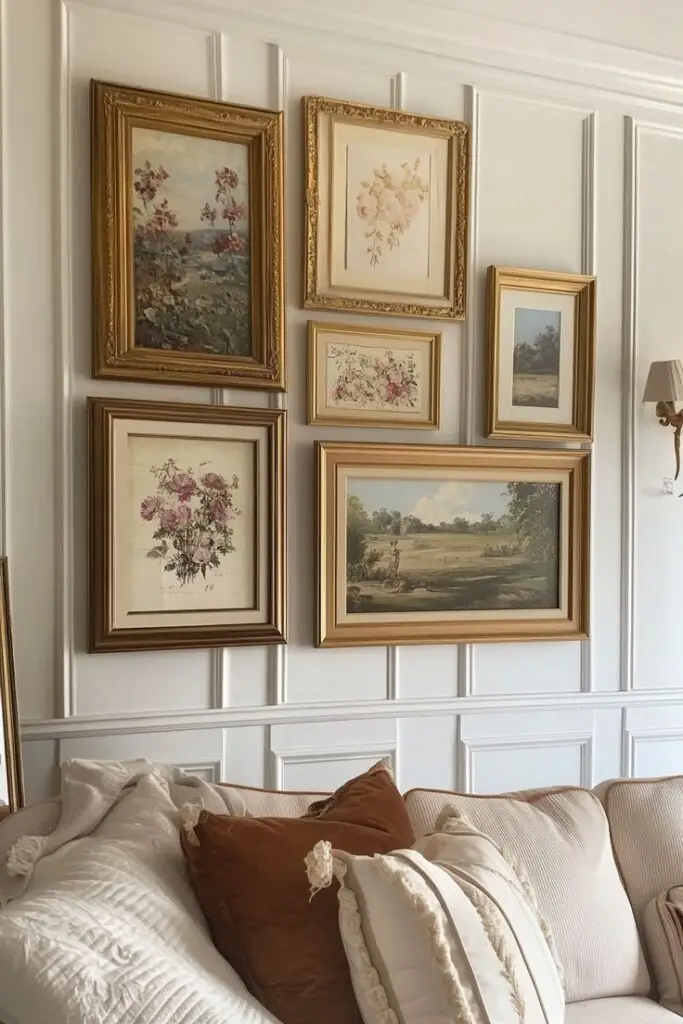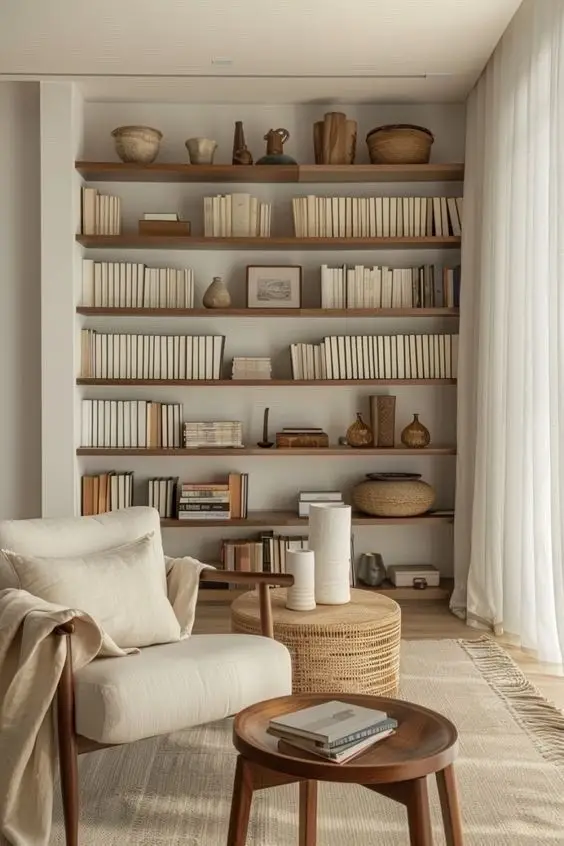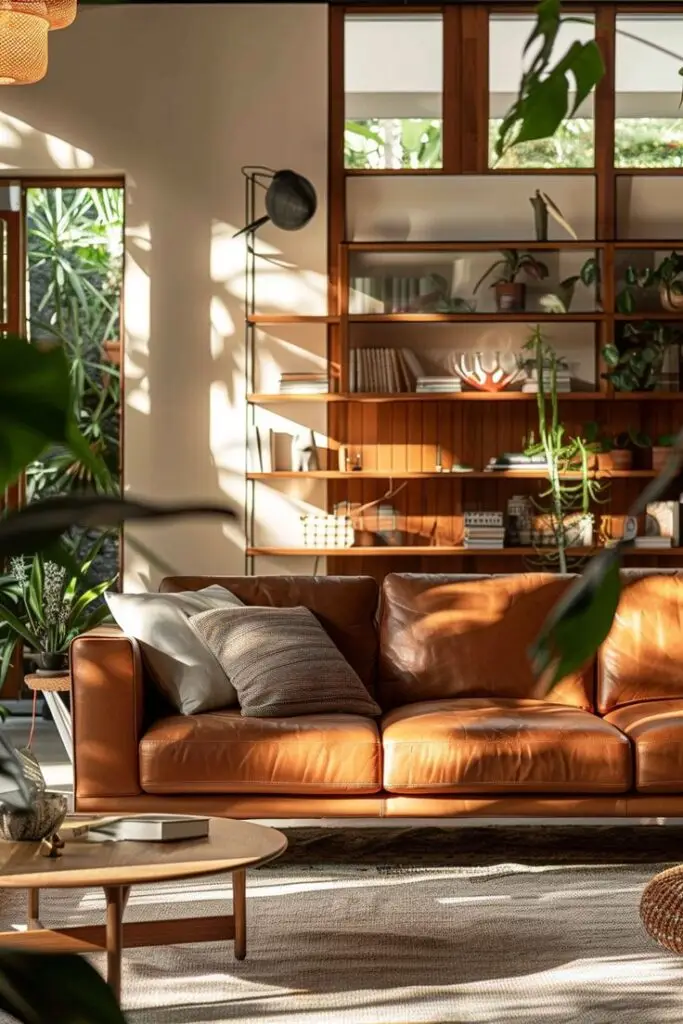Interior design adds a personal touch to your living space, turning a house into a home. In 2025, understanding the top five interior design styles will help you create an ambiance that reflects your personality and lifestyle. Each style has its unique characteristics, allowing you to choose elements that resonate with your taste.
As you explore these design styles, consider how they can be adapted to fit your space. From modern minimalism to classic elegance, your choices can significantly impact the look and feel of your environment. Embracing these styles will empower you to make informed decisions that enhance your home.



1) Modern Scandinavian
Modern Scandinavian design emphasizes simplicity, functionality, and minimalism. You will notice clean lines and a focus on open spaces, creating a serene atmosphere in your home.
Color palettes tend to favor neutral shades, often incorporating whites, grays, and natural tones. You can add warmth through wooden furniture and textiles, which enhance the inviting feel of a space.
Natural light plays a crucial role in this style. You should consider maximizing windows and using light furnishings to reflect and amplify brightness. This approach makes your home feel more spacious and airy.
Furniture often features sleek, modern designs with a practical touch. Look for pieces that balance aesthetics with usability, ensuring that each item serves a purpose while enhancing the overall look.
Incorporating key accessories like soft textiles and greenery can create a cozy, inviting atmosphere. You might choose cushions, rugs, and plants to add layers of comfort and connection to nature in your space.



2) Mid-Century Modern
Mid-Century Modern design emerged in the mid-20th century and remains popular today. Its clean lines and minimalist aesthetic appeal to many.
Key characteristics include organic shapes, functionality, and an emphasis on form. You’ll often find furniture made from teak, walnut, and molded plastics.
Color palettes generally feature earthy tones along with bold accent colors. This blend creates a warm and inviting atmosphere.
Mid-Century Modern spaces often incorporate large windows to connect indoor and outdoor elements. This approach enhances natural light and integrates nature into your home.
When decorating in this style, focus on simplicity and practicality. Choose furniture that serves multiple purposes without sacrificing elegance.
Incorporating iconic pieces, such as Eames chairs or Noguchi tables, can elevate your design. Accessories should be minimal, allowing key furniture elements to stand out.
This timeless style is about creating a comfortable and functional living space that feels open and airy.



3) Industrial Chic
Industrial Chic combines raw materials and minimalist design. You will find elements like exposed brick walls, metal fixtures, and reclaimed wood. This style celebrates the beauty of unfinished spaces and utilitarian features.
Incorporate large, open spaces with high ceilings to enhance the industrial vibe. Opt for oversized furniture that complements the rugged aesthetic. Use a mix of textures, such as leather, steel, and concrete, to create visual interest.
Lighting plays a crucial role in Industrial Chic design. Choose pendant lights or Edison bulbs to add character. These elements help to maintain the open, airy feel typical of this style.
For color palettes, stick to neutral tones paired with deep, rich colors. Shades of gray, brown, and black work beautifully together. Accent these with pops of color through artwork or decorative items.
Embrace an eclectic approach by mixing vintage and modern pieces. You can personalize your space while still adhering to the industrial theme. This balance will create a unique and inviting atmosphere in your home.



4) Coastal Design
Coastal design captures the essence of seaside living. It brings the beach indoors, creating a refreshing and airy atmosphere.
Light colors dominate this style. Soft whites, sandy beiges, and ocean blues reflect the natural elements found near the shore. You can incorporate these shades through paint, furniture, and decor.
Textures play a crucial role. Natural materials like wood, linen, and cotton enhance the beachy feel. You might consider using driftwood accents or sisal rugs for added authenticity.
Decorative elements often include nautical themes. Think coral, seashells, and maritime art. These details reinforce the coastal vibe without overwhelming the space.
Lighting is vital in coastal design. Use large windows to bring in natural light. Sheer curtains can help maintain privacy while allowing brightness to flow through.
Finally, furniture is typically casual and comfortable. Slipcovered sofas and oversized chairs invite relaxation, making your space welcoming and perfect for gatherings.



5) Bohemian Eclectic
Bohemian eclectic style offers a vibrant mix of colors, patterns, and textures. This style celebrates individuality and artistic expression, making each space unique.
You can incorporate various elements like vintage furniture, handmade crafts, and global artifacts. Layering is key; use rugs, throw pillows, and blankets to create a warm, inviting atmosphere.
Plants play an important role in bohemian design. By adding greenery, you enhance the natural feel of your space.
Artwork is also essential. Mix and match different styles, sizes, and frames to create an eclectic gallery wall.
Personal touches are crucial in bohemian design. Display your travel souvenirs, heirlooms, or any items that reflect your personality. This approach transforms your home into a true reflection of you.



Understanding Interior Design Trends
Interior design trends are shaped by various factors, including historical contexts and cultural shifts. Recognizing these influences helps you appreciate the current landscape of design aesthetics.
The Evolution of Design Aesthetics
Design aesthetics have transformed significantly over the decades. The shift from ornate styles, like Victorian, to minimalist movements, such as Mid-Century Modern, reflects changing societal values.
In recent years, there has been a resurgence of handcrafted elements alongside a focus on sustainability. You will notice organic materials, such as reclaimed wood and natural fibers, becoming central to many designs. This evolution highlights a preference for authenticity over mass production.
As you explore these trends, observe how global accessibility via the internet influences personal design choices. What was once niche is now mainstream, making interior design an evolving art form that aligns with contemporary values.
Cultural Influences in Modern Design
Cultural influences play a pivotal role in shaping modern interior design. Globalization has led to a blending of styles, allowing you to incorporate various cultural elements into your space.
For example, the popularity of Japanese Zen aesthetics emphasizes simplicity and a connection to nature, encouraging tranquility in your home. Similarly, Scandinavian design prioritizes functionality while embracing minimalist beauty.
Additionally, many contemporary designs draw inspiration from diverse art forms, such as African textiles or Asian motifs. By understanding these influences, you can create spaces that resonate with your personality and heritage.
Incorporating these elements thoughtfully can lead to a rich, layered interior that tells a story. Being aware of these cultural shifts allows you to engage with design on a deeper level.
Key Elements of Popular Styles
Understanding how different elements come together in interior design can significantly enhance your space. The right balance of functionality, color, and texture can bring your design vision to life.
Balancing Functionality and Style
Striking a balance between functionality and style is essential in any interior design approach. Each room should serve its intended purpose while reflecting your aesthetic preferences.
Consider furniture selection carefully; opt for pieces that are both stylish and practical. Multi-functional furniture, like a stylish ottoman that doubles as storage, is an effective solution.
Layout plays a crucial role. Ensure there is adequate space for movement and that furniture arrangements promote comfort and usability. Aim for a cohesive look while also keeping your lifestyle needs in mind, ensuring every element adds value to your space.
The Role of Color and Textures
Color and texture are powerful tools that can dramatically influence the atmosphere of your rooms. Choosing the right color palette sets the mood and tone for your space.
Warm colors can create a welcoming environment, while cool colors often promote calmness. Use bold accent colors sparingly to create focal points in a room.
Texture adds depth and interest. Mix materials such as soft fabrics like velvet or linen with harder surfaces like wood or metal. Layering textures can create a dynamic yet harmonious look.
Incorporate rugs, cushions, and artwork to introduce varied textures that complement your color choices and enrich your interior spaces.






